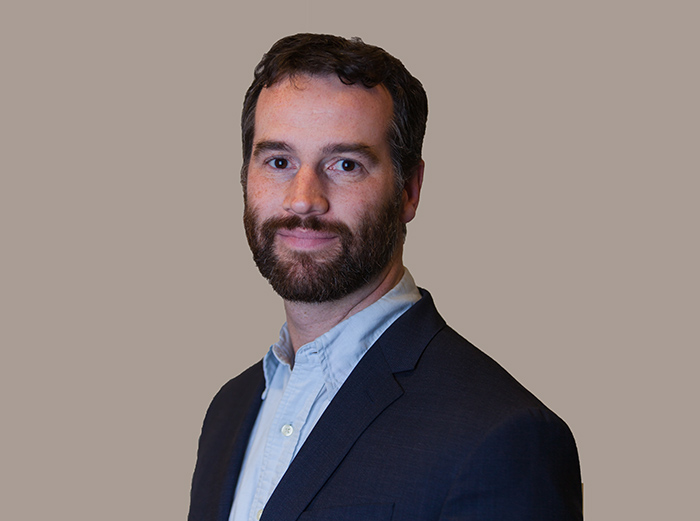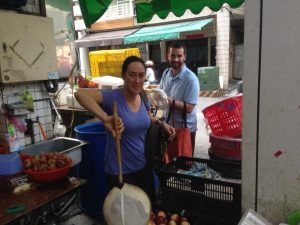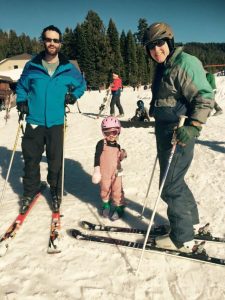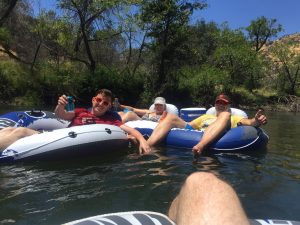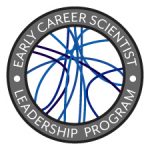 Nigel Delaney, Vice President of Computational Biology at the startup GenePeeks, talks about his transition from team member to manager and recommends PhD students remember the value of their training and time off when needed.
Nigel Delaney, Vice President of Computational Biology at the startup GenePeeks, talks about his transition from team member to manager and recommends PhD students remember the value of their training and time off when needed.
In the Decoding Life series, we talk to geneticists with diverse career paths, tracing the many directions possible after research training. This series is brought to you by the GSA Early Career Scientist Career Development Subcommittee.
How did your life experiences influence your career trajectory?
As a college student at UCSD, I spent two years at the Scripps Institute of Oceanography through the NSF Research Experiences for Undergraduates program. I traveled to Antarctica for fieldwork, I learned how to write computer programs and develop science projects, and I loved it! This experience led me to pursue a research assistant position in Dan Hartl’s lab and later graduate training in microbiology and evolutionary genetics with Chris Marx, specifically studying beneficial mutations in microbes. While I enjoyed my graduate work, I wanted to move onto something different, so I completed a postdoc at the Broad Institute studying deleterious mutations that affect human populations.
During my postdoc, I started contributing to a GitHub project that led to my recruitment by PacBio. I was offered an interview, and while I was sure I wouldn’t leave academia, my niece had just been born in the Bay area, and I thought it would be nice to be near family. However, during the interview, I fell in love with the team, the problems and the approaches they were taking to solve them. I joined PacBio as an individual contributor working on statistical models of DNA sequencing and was later promoted to manager. I was eventually recruited by the startup GenePeeks, where I now work as the Vice President of Computational Biology. At GenePeeks, I continue to do research on how deleterious mutations move through populations, but I focus on identifying diseases for IVF clinics.
What experiences outside of your scientific training have had the greatest impact on your career?
My wife! Aside from her, so many seemingly random moments have changed my career path. I went to graduate school at Harvard because I met a friend at a study abroad program who told me about the research assistant position available in Dan Hartl’s lab. I got the job for PacBio because of the GitHub project that I joined on a whim. It’s interesting how decisions you make with no regard to your career can have so much influence on it.
You were recruited for both of your industry positions. What activities led to your recruitment?
You can’t ever go wrong by having your work externally visible in the world. PacBio was looking for a programmer with strong bioinformatic skills, and I had been contributing bioinformatics code to an open source project on GitHub. PacBio went through all the key repositories and contacted the contributors there, which included me, and this is a common approach.
I also set up a LinkedIn profile because I noticed that other postdocs at the Broad Institute were doing consulting work based on contacts they formed from LinkedIn. GenePeeks first contacted me through LinkedIn, and I was a consultant for them during my postdoc. Once the startup obtained more funding, they recruited me.
Aside from building an online portfolio, what are steps trainees can take when applying for a position in industry?
The best thing you can do is meet someone at the company and network. Send emails to people in the groups you want to work in, and ask if they can talk with you. People are excited about young people that have something to offer. Just do it! (’90s slogan for the win.)
It is important to be able to explain details about your work and to demonstrate proof of it. I screen all my applicants on Github and check their code; I try to decide if they can actually do this or if it was a one-off thing mainly led by an adviser or collaborator.
Also, read the job applications closely and find clues about what they are looking for. For example, if they list that they want skills to do Illumina Sequencing, then look at their research and figure out how these skills apply to the projects they are working on. If you can connect the dots between the content of the job posting and what problem they are looking to solve in the company, then you have a better chance to get in. Lastly, it’s important to remember that for me to get a job opening, I need to go to management and convince them that we need someone in here to solve a particular problem. We get many applicants, but when I see an applicant that is suited to solve exactly what I am looking to fix, I chase them down actively.
What was it like to transition into a managerial role?
Being a manager is about figuring out how to motivate people to advance a bigger goal. It’s similar to the transition that academics experience going from postdoc to PI. Your ability to succeed depends on how well you communicate your vision to your lab and support them to execute that vision and succeed on their own and as part of a team.
My company did not give specific training on how to be a manager. I asked a bunch of people how they figured it out, and it’s similar to other problems in life: find people who are doing a good job at it, and mimic what they do. There is a wealth of data on how to manage people—read some books on the subject. Like many things in life, tips on being a good manager are all very intuitive, but you have to stay on top and execute them well. I purchased a copy of Managing for Dummies, and I put it on my desk to communicate to everyone that I don’t always know what I’m doing, and they should feel free to give me feedback.
What is a typical day as a manager at a startup look like?
I currently work remotely, but my days wouldn’t be too different if I was on site. I have eight or nine people working for me and it’s my responsibility to make sure they are focused and motivated. I monitor morale and try to help them with what they are trying to accomplish. The best part of being a leader is seeing a group of people achieve their goals. Every week, my team has lab meetings and I also meet with the management team and board members. I spend far, far, far too many hours writing emails. On the days where my team is in a good place, and I sort all the emails, I can sit back, read papers, and meditate on where we are and how our project relates to the larger field.
As part of a startup, I also sometimes meet with funders, which is an incredibly different experience. To give you a glimpse of what that can be like, I’ll tell you a bit about one of the first ones I went into. We were pitching to the research division of a Seattle area tech company to be vetted for our technology. We walked into the room, and it was obvious each person had different hangups about the product. Instead of just presenting a neat story, we had to figure out what was blocking them and tackle it. I had prepared this big presentation, and not a single bit of it was used.
How do you use skills from your PhD in your current position?
All the hard skills are required to get into the door, such as coding, modeling, statistics, and designing experiments. What I wasn’t aware of during my training was the importance of skills involved in creating and conveying a narrative to other people. In any industry, if people don’t think what you’re working on is important in the first five minutes of a presentation, they won’t care about what you are doing. Communicating your ideas clearly is something you do when you write grants, present at conferences, write papers, or present at lab meeting. If you want to be a thought leader and move within an organization, you need to be able to clearly communicate your vision. I never appreciated how much that thought process can come naturally to you after being trained in a PhD program.
However, there were a lot of things that I did as a postdoc that weren’t required of me when I started at PacBio. As a postdoc, you have to have a website and think about how to make the HTML great for your website. When you’re in industry, the marketing department does that. In industry, when you want to hire someone, you can use a recruiter to oversee the process. There are a lot of ways you can delegate tasks to other specialists in industry, and this is not something I had in academia.
What advice do you have for graduate students?
My biggest regret is not taking more time off. I wish I had spent more time relaxing and enjoying Boston. You come out of a PhD program with an amazing set of skills that will be valuable to many industries. Remember that, and relax when you feel like you need to!
About the author:
![]() Didem Sarikaya is the Co-Chair of the Early Career Scientist Career Development Committee and an FRSQ Postdoctoral Fellow at the University of California Davis. She is committed to bringing forward stories and tools for trainees to learn more about career options so they can develop personally meaningful career trajectories.
Didem Sarikaya is the Co-Chair of the Early Career Scientist Career Development Committee and an FRSQ Postdoctoral Fellow at the University of California Davis. She is committed to bringing forward stories and tools for trainees to learn more about career options so they can develop personally meaningful career trajectories.
Learn more about the GSA’s Early Career Scientist Leadership Program.

